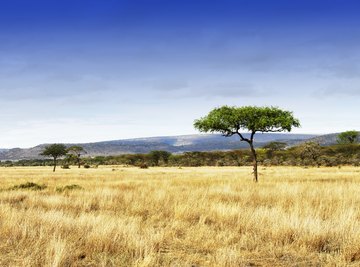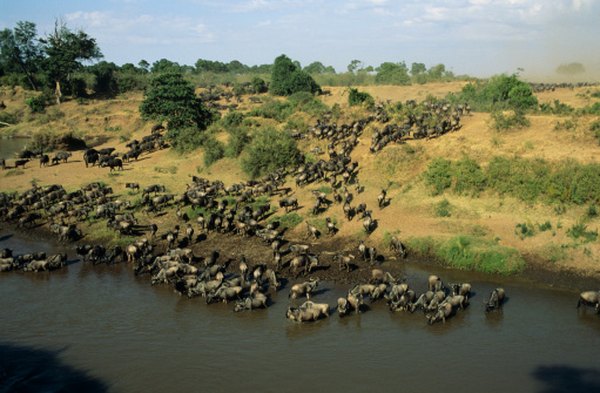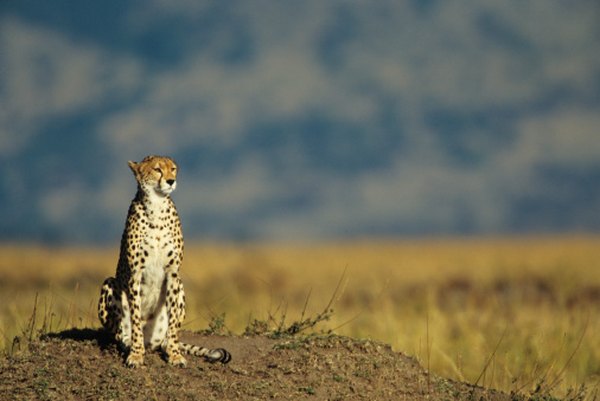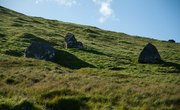
The savanna grasslands really have two distinct seasons, summer and winter. Fall and spring are periods of violent change in weather for the grasslands, when the weather shifts from the wet season into the dry season, or vice versa. Winter is the dry season in the savanna climate, and temperatures are slightly cooler during this period. The summers are hot and bring a lot of precipitation.
Spring
Spring in the African savanna brings violent thunderstorms and increased rainfall. The active weather, beginning in March, leads into the wet season. During this time, the savanna temperature warms up from the cool, dry winter to the wet, warm summer. They stay between 70 and 75 degrees Fahrenheit throughout the spring, gradually warming up to the 80 degrees and above days of the summer. During this season, some savanna grasses grow an inch in one day, according to the University of California Museum of Paleontology.
Summer

Summer is considered the wet, warm season of the savanna grasslands. Temperatures throughout the summer season in the savanna remain above 80 degrees Fahrenheit. The heat evaporates moisture near the Earth, which rises and collides with the cooler moisture in the air above. This collision creates daily rains throughout the hot summers. The 20 to 50 inches of average annual rainfall in the savanna occurs mostly in the six-to-eight-month wet season.
Winter

Winter is the dry season; the savannas only average about four inches of rain during the entire dry season. December, January and February see no rain at all in the savannas. Through the drought, only grasses survive. The winter temperatures are cooler, but rarely cold. They are usually between 65 and 70 degrees Fahrenheit and on occasion have dropped to 40 degrees Fahrenheit.
Fall
Like spring, autumn in the savanna grasslands is turbulent. The lightning from fall storms starts fires that burn through the grasslands. The fires are a necessary part of the savanna biome; they rejuvenate the soil and encourage new growth. Temperatures during this period are cooling from the hot 80 degree Fahrenheit summers to the 65 degree winters. They usually hover somewhere in the middle, around 75 degrees.
Fires
Seasonal fires contribute to the savanna's biodiversity. Starting October, repetitive violent thunderstorms, followed by a strong wind that dries things out, marks the beginning of the dry season. Fire is at its highest in January, at the peak of the dry season. Fires in savannas can be caused by poachers who clear away dead grass to make it easier to spot their quarry.
References
Resources
About the Author
Michaelyn Erickson has been writing since 2005 and has been published regularly in a variety of northwest publications. She has written a science fiction novel and is now working on a children's book series. Michaelyn attends Evergreen State College where she is pursuing a degree in sustainable living.
